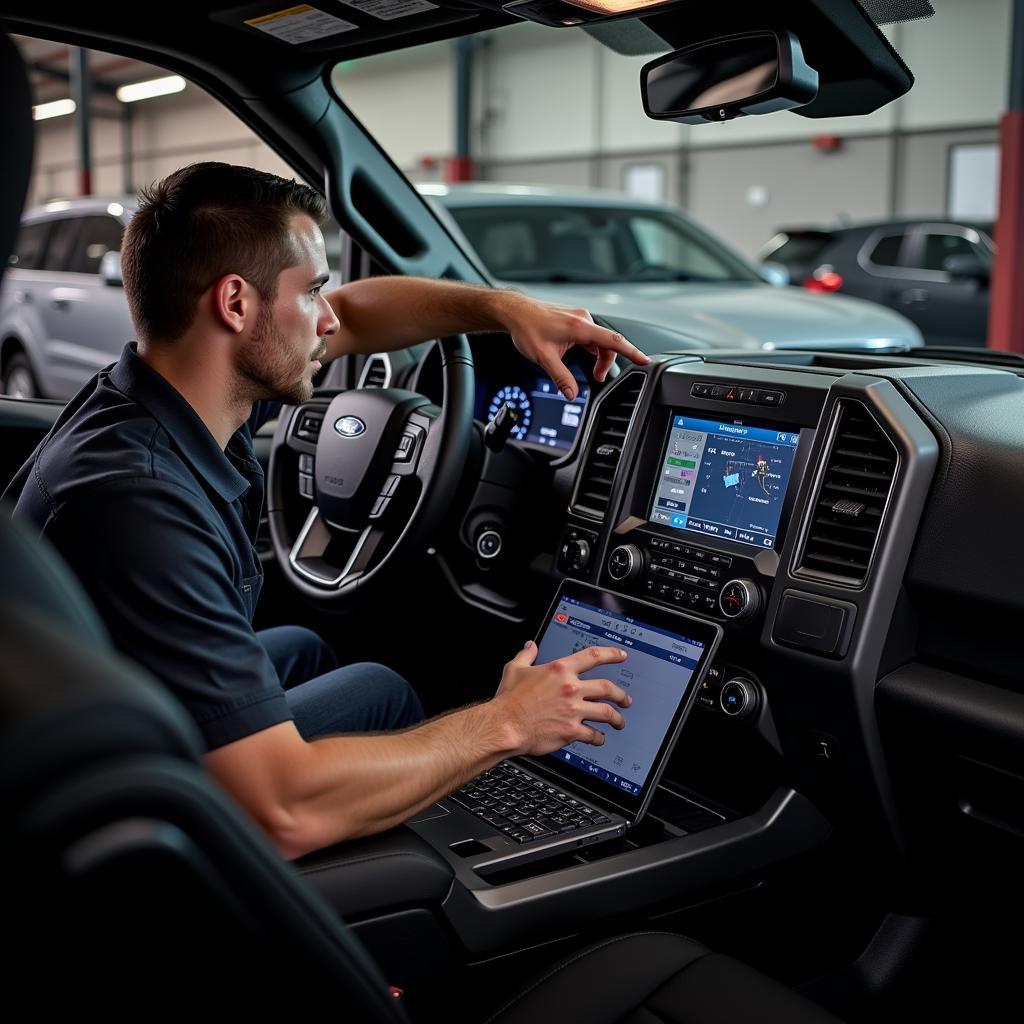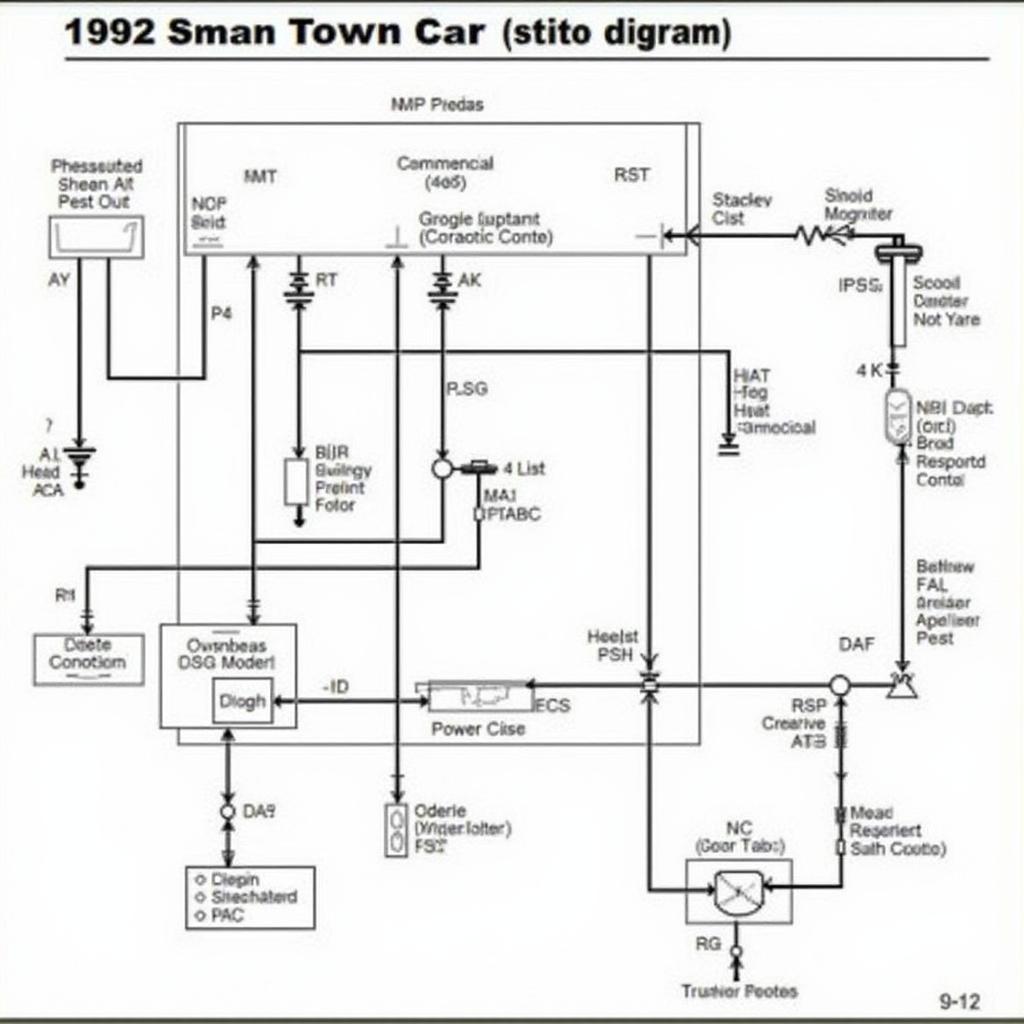The Ford collision warning with brake support system in your 2018 Raptor is a crucial safety feature. Malfunctions can be alarming and potentially dangerous. This comprehensive guide will delve into common issues, diagnostic techniques, and remote programming solutions for the “ford collision warning with brake support 2018 raptor” system, offering you practical steps to get your safety system back on track.
Understanding the Ford Collision Warning System in Your 2018 Raptor
The collision warning system uses sensors to monitor the distance between your Raptor and the vehicle ahead. If it detects a potential collision, it alerts you with visual and audible warnings. The brake support feature pre-charges the brakes, enabling faster stopping in emergency situations. This integrated system is designed to help you avoid or mitigate the impact of a frontal collision. Understanding its core components is the first step to effective troubleshooting. These components include the radar sensor, camera (if equipped), control module, and the associated wiring.
A properly functioning system provides an additional layer of safety, especially during highway driving or in challenging weather conditions. However, several factors can disrupt its operation.
Common Causes of Ford Collision Warning with Brake Support Malfunctions
Several issues can trigger a “ford collision warning with brake support 2018 raptor” malfunction. These range from simple obstructions to more complex software or hardware problems. Knowing the common culprits can save you time and frustration during the diagnostic process.
- Obstructed Sensors: Dirt, snow, ice, or even bugs can block the radar sensor, causing false alerts or system deactivation. Regular cleaning of the sensor area is vital.
- Misaligned Sensors: A slight misalignment of the radar sensor can significantly impact its accuracy. This often requires professional recalibration.
- Software Glitches: Like any computer system, the collision warning system relies on software that can occasionally experience glitches. Remote software updates and programming can often resolve these issues.
- Faulty Wiring or Connections: Damaged wiring or loose connections can interrupt the flow of data, leading to system errors.
- Component Failure: In some cases, a faulty radar sensor, control module, or other component might require replacement.
Diagnosing Ford Collision Warning with Brake Support 2018 Raptor Issues
Diagnosing a “ford collision warning with brake support 2018 raptor” problem requires a systematic approach. Start by checking for any obvious obstructions on the sensor. If the issue persists, further diagnostics using specialized diagnostic tools can pinpoint the root cause. These tools can read fault codes stored in the system’s control module, providing valuable clues.
Remember, a thorough diagnostic is essential before attempting any repairs or replacements. This ensures you’re addressing the actual problem and not just treating symptoms.
Remote Programming and Software Updates for Your 2018 Raptor
Remote programming and software updates can often resolve software-related malfunctions. These updates can address bugs, improve system performance, and even add new functionalities. Many modern vehicles, including the 2018 Raptor, can receive these updates wirelessly through over-the-air (OTA) updates.
“Regular software updates are crucial for maintaining the optimal performance and safety of your vehicle’s advanced driver-assistance systems,” says John Miller, a Senior Automotive Diagnostics Engineer at Ford. “These updates address known issues and can enhance the system’s reliability.”
DIY vs. Professional Service: When to Seek Expert Help
While some basic checks and troubleshooting steps can be performed at home, complex diagnostic procedures and remote programming often require specialized equipment and expertise. If you’re unsure about performing any procedure or the issue persists after initial troubleshooting, seeking professional help is recommended.
“Attempting complex repairs without the proper training and tools can potentially exacerbate the issue or even cause further damage,” warns Maria Sanchez, Lead Technician at a certified Ford service center. “It’s always best to consult a qualified technician when dealing with intricate systems like the collision warning system.”
 Ford Technician Performing Diagnostic Check on a 2018 Raptor
Ford Technician Performing Diagnostic Check on a 2018 Raptor
Conclusion
Addressing “ford collision warning with brake support 2018 raptor” issues promptly is vital for ensuring your safety on the road. By understanding the system’s operation, common problems, and diagnostic approaches, you can effectively troubleshoot and resolve malfunctions. Remember, seeking professional assistance when needed is always the best course of action to ensure accurate diagnosis and effective repairs, keeping your 2018 Raptor’s safety systems in peak condition.
FAQ
- How do I clean the radar sensor on my 2018 Raptor? Use a soft cloth and mild soap and water solution. Avoid abrasive cleaners or high-pressure water jets.
- Can I perform remote programming myself? While some basic software updates might be accessible to owners, complex programming often requires specialized tools and expertise.
- How often should I have my collision warning system checked? It’s recommended to have the system inspected during your regular vehicle maintenance checks.
- What does the collision warning light mean? A solid light usually indicates a system malfunction. A flashing light might indicate an imminent collision risk. Consult your owner’s manual for specific light meanings.
- Can I disable the collision warning system? While you can typically adjust the system’s sensitivity, completely disabling it is not recommended as it compromises your safety.
- How much does it cost to repair the collision warning system? The cost varies depending on the specific issue and the required repairs.
- Where can I find more information about my 2018 Raptor’s collision warning system? Your owner’s manual is the best source of information. You can also find helpful resources on the Ford website.

